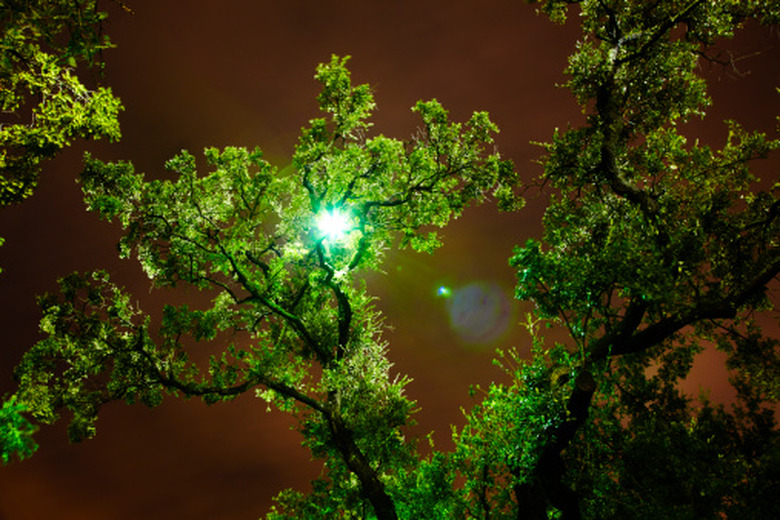What Is Eating My Tree?
Trees are usually the largest plants in the landscape, but they are not immune to pest infestations. Several varieties of bugs and insects prefer to feed on the leaves and woody growth of trees over other types of plants. Both deciduous and evergreen trees provide the main source of food for several types of pests, including wildlife. Identifying the source of the damage is the first step in protecting the health of your tree.
Wildlife
Animals are one of the main causes of tree and shrub damage in many rural areas and country landscapes. The bark, foliage and fruits of trees provide food for a variety of wildlife. Birds, squirrels, chipmunks and small rodents feed on the fruits and nuts of trees while deer, elk and antelope tend to graze at the foliage. Missing leaves and branches from the lowest parts of the trees is a common sign of wildlife grazing. Many mammals, including raccoons and skunks, may gnaw on the roots or bark of trees, especially in the absence of other food sources.
- Trees are usually the largest plants in the landscape, but they are not immune to pest infestations.
- Several varieties of bugs and insects prefer to feed on the leaves and woody growth of trees over other types of plants.
Foliage Feeders
In addition to the wildlife that graze on leafy vegetation, several smaller pests also eat away at the leaves. Known as defoliators, these bugs and insects strip away entire sections of leafy growth. The leaves usually grow back, but extensive feeding may remove the tissues that contain chlorophyll, affecting the trees' ability to process light into energy. Severe and prolonged infestations may cause extensive damage and death. Foliage feeders include webworms, moths, caterpillars, bagworms, cankerworms and sawflies.
Borers
Some insects bore holes beneath the bark of the trees as well as holes that extend into the woody growth of the trunk and branches. The main reason for boring is to lay eggs in protected areas. The living tree tissue around the hatchlings provides food during their early stages. Southern pine beetles, black turpentine beetles, wood wasps and ambrosia beetles are all borers that may be responsible for eating away at your tree.
- In addition to the wildlife that graze on leafy vegetation, several smaller pests also eat away at the leaves.
Treatment
The correct treatment to protect your tree from feeding animals and insects depends on the pest that is responsible for the damage. Chemical insecticides can help eradicate insect infestations, although most contain toxic substances. Beneficial insects that feed on the harmful pests can help reduce the population of some pests. Beneficial insect include checkered clerid beetles, cerceris fumipennis and lady beetles. Keeping wildlife out of your trees often requires chemical deterrents or protective fencing and netting.
References
- North Carolina Forest Service: Common Forest Insect Pests
- Penn State: Landscaping for Wildlife: Trees, Shrubs, and Vines
- "The Green World Horticulture"; Gail M. Lang; 2007
